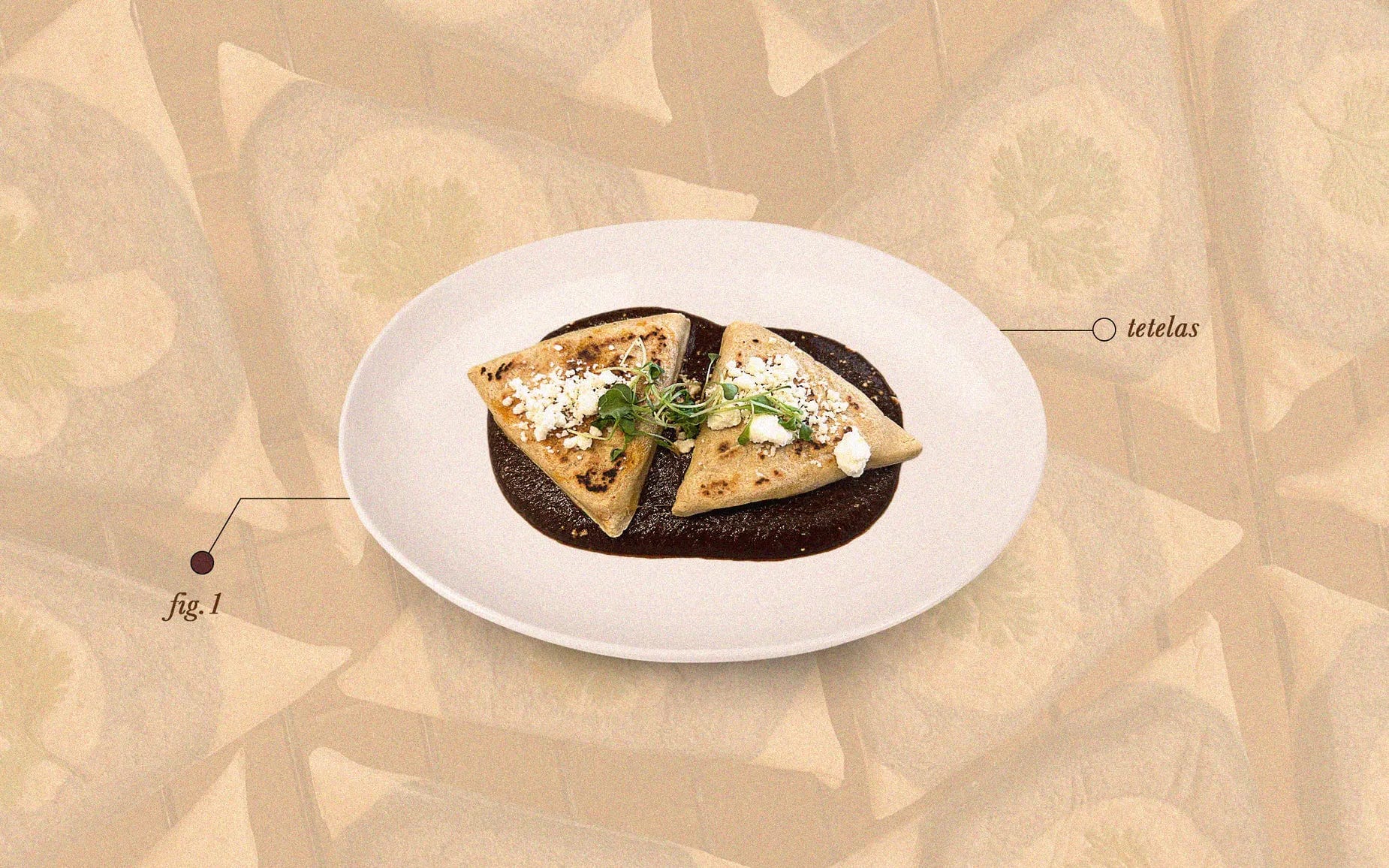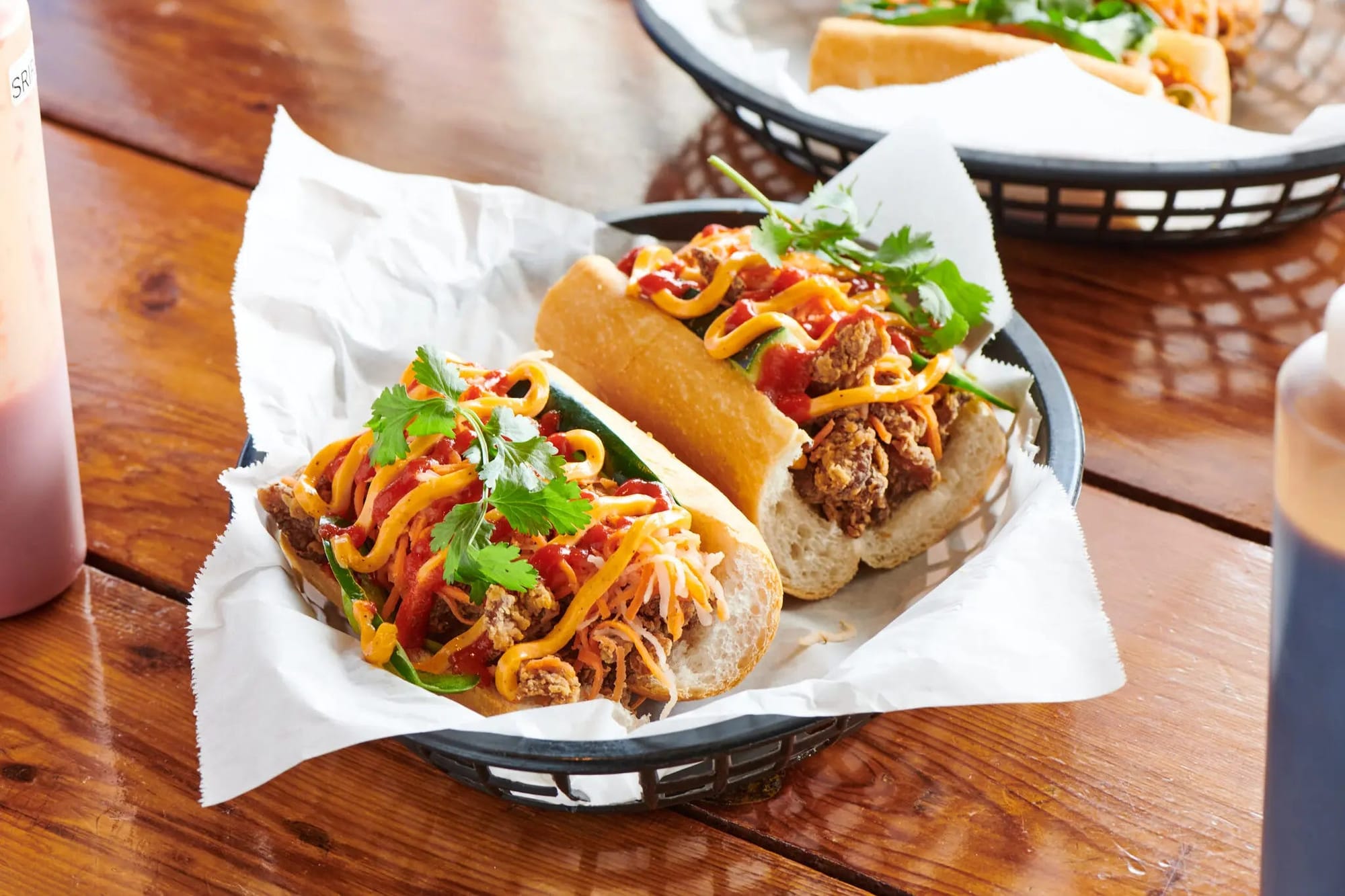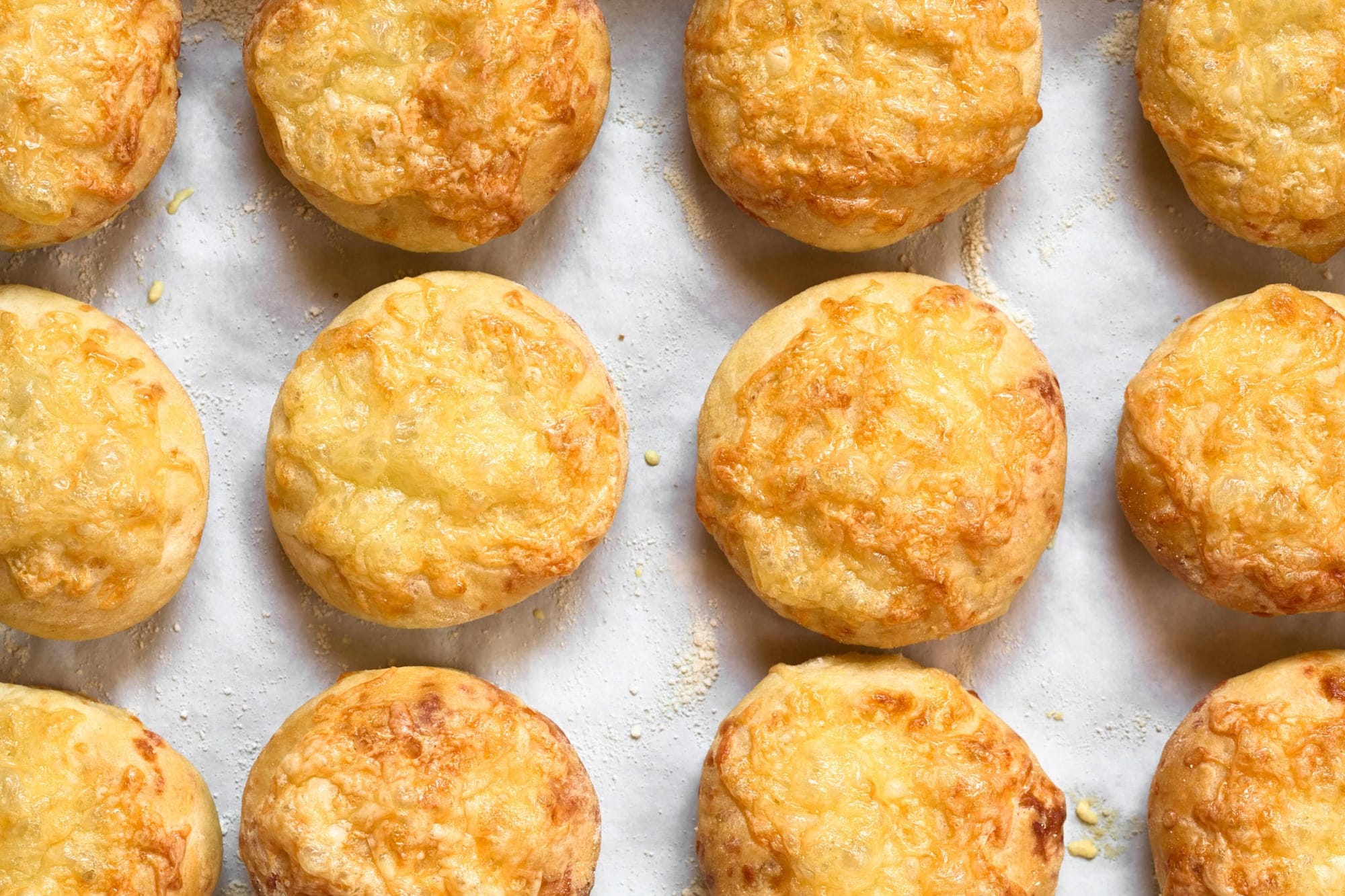Friday Bread Basket 5/6/22

Welcome to the Wordloaf Friday Bread Basket, a weekly roundup of links and items relating to bread, baking, and grain. This week’s email covers a few grainy products that were unfamiliar to me—tetelas and pogácsas—along with new trend in one of my favorite ones, banh mi.
Texas Triangles

Over at Texas Monthly, José Ralat profiles the tetala, a triangular packet of masa, filled with beans, meat, vegetables, or cheese, often served with a sauce:
[T]he tetela is one of a small number of pre-Hispanic dishes that continue to thrive into modernity. (Another is the tamal.) Its creation is credited to the indigenous Mixtec people, a pre-Aztec culture in the Mexican state of Oaxaca and parts of neighboring Puebla and Guerrero. The tetela itself goes back to Mesoamerican times. Yet only now are tetelas gaining widespread popularity across Texas. And they’re a prism through which taqueros and Mexican chefs can test their craft and imagination.
I first encountered tetelas at one of Garza’s stellar and short-lived Neighborhood Molino brunch pop-ups in McAllen in 2021. The triangular, nixtamalized-corn antojito (Spanish for snack, but it literally translates to “little whim”) encased hibiscus–and–red chile–braised mushrooms and quesillo. Hibiscus leaves were pressed into the exterior of the masa, making for an eye-catching meal. During the pop-up’s run, Garza also created patterns in their tetelas by mixing different colors of masa.
I love a good triangular food, and these are one I need to try soon!

Auto Banh

At the New York Times, Priya Krishna wrote about the movement to marry Vietnamese cuisine to the drive-through happening in Houston, Texas:
In his vision, the drive-through — a classic American innovation that harnessed the fast-food business to the nation’s car culture — is also a potential vehicle to make Vietnamese food the next cuisine to join that success story. He believes that Americans’ increasing familiarity with Vietnamese cuisine makes it the ideal food for the next generation of drive-through restaurants.
Which reminds me I need to get back to work on my banh mi roll recipe.

Scocaccia?

I loved this rundown of all the kinds of pogácsa you might encounter in Budapest. Pogácsa, which I’d not heard of before, are a Hungarian yeasted biscuity, sconey party treats that are a long way from focaccia, from which their name derives:
Pogácsa, which usually gets a loose translation as ‘scones’ or ‘biscuits,’ are everywhere in Hungary. A savory bready treat that etymologically derives its name from foccacia, pogácsa are found in every corner store, bakery, and even in a few Hungarian folk tales, which is perhaps one reason why they are loved so much.
Pogácsa, or ‘pogi’ for short, also seem to be compulsory for most organized social gatherings. Indeed, pogácsa are as much about socializing as about feeding a hunger pang. But just as not all gatherings are alike, not all pogácsa are alike, and the type of pogácsa you get will need to conform to the type of socializing you are doing. Below is a helpful guide to the various pogácsa you are likely to find around Budapest, because as with much food, context is also an ingredient.

That’s it for this week’s bread basket. I hope you all have a peaceful weekend, see you next week.
—Andrew





Member discussion